For me, travel is all about immersion. There’s no better way to gain an understanding of a destination and its people by diving head-first into the local culture and keeping an open heart and mind. When visiting South Korea, there is no experience more immersive than a Korean Temple stay at Beomeosa Temple.
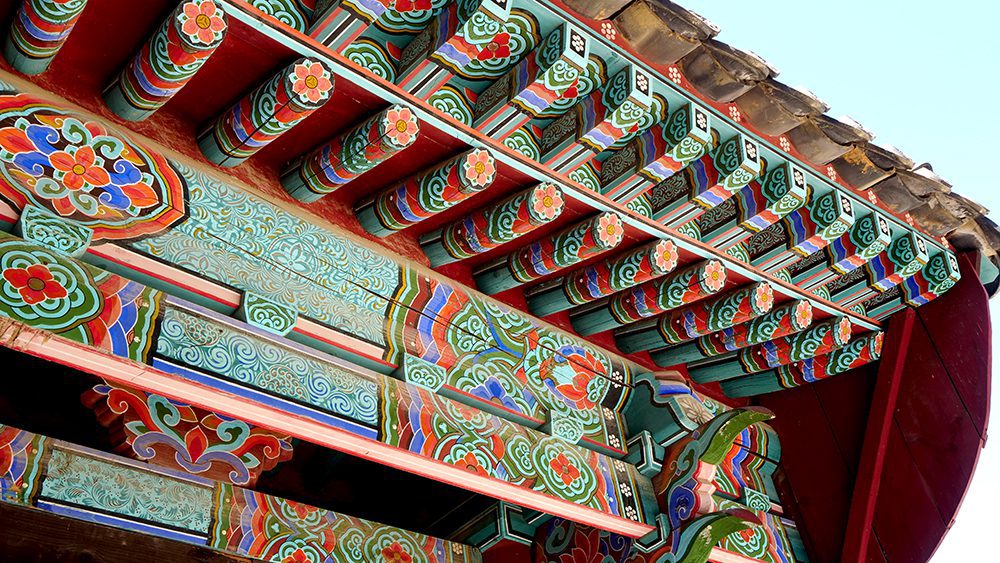
Staying overnight at this Buddhist temple in the country’s second-biggest city, Busan, is an experience I will never forget. It’s not just an observation-driven experience. It’s one that offers full immersion and interaction. You get to speak with the monks and learn about the Korean Buddhist culture. You get to participate in the rituals they practice every day. You get to eat their food and gain an understanding of what life in a Buddhist temple is really like.
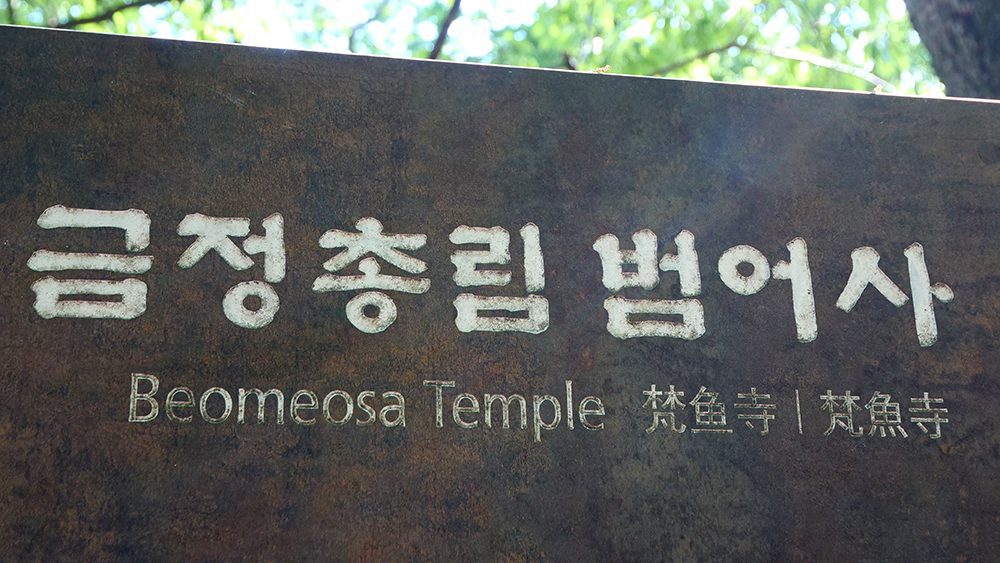
And you get to do it all in a beautiful, historic setting that can change you for the better if you let it. This temple, which dates back to the year 678 and stands proudly on the slopes of Geunjeongsan Mountain, offers a serenity unlike anything I’ve ever felt in my travels. My stay was a lifechanging experience that I hope you’ll someday get to enjoy. Here, I will explain everything you need to know about your Korean temple stay at Beomeosa Temple.
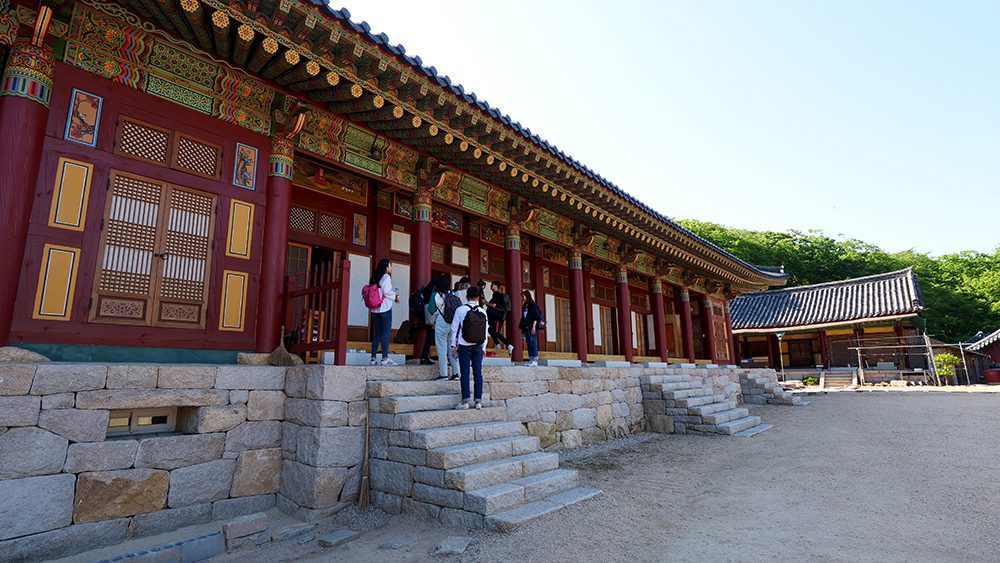
The easiest way to arrange a stay at Beomeosa Temple is to book it through the official Korean temple stay program’s website. On the site, you can choose from roughly 30 temples throughout the country, all of which cater to English speakers. You can also choose the length of your stay and learn more about the program itself.
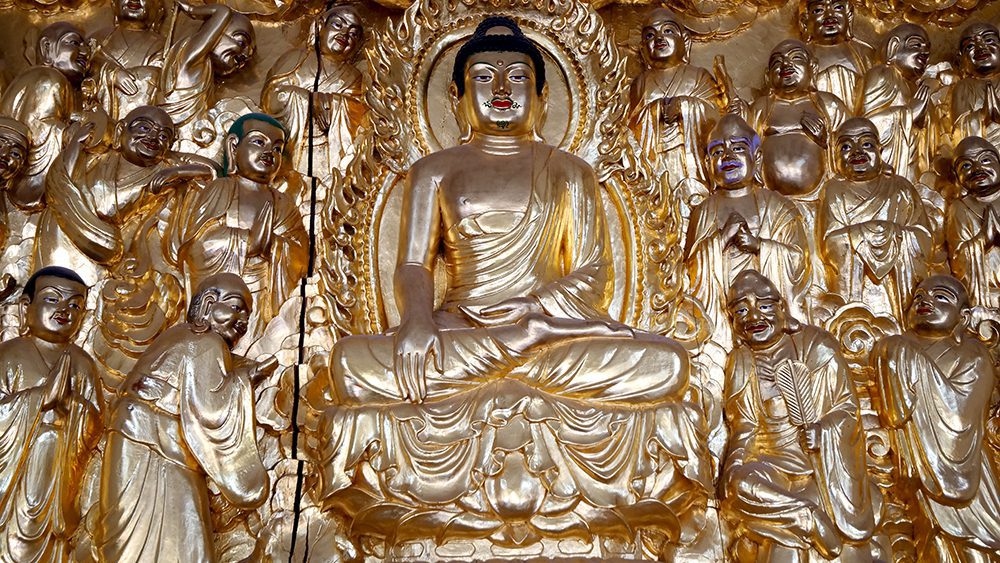
There are two types of stays available at Beomeosa Temple. The $40 Relax & Relax Program gives you a flexible schedule and the freedom to explore the temple grounds at your leisure, but I recommend the $60 Geumeo Program. The Geumeo Program gives you a real look at daily life at the temple. It’s an immersive experience that allows you to participate in Buddhist rituals and interact with the resident monks.
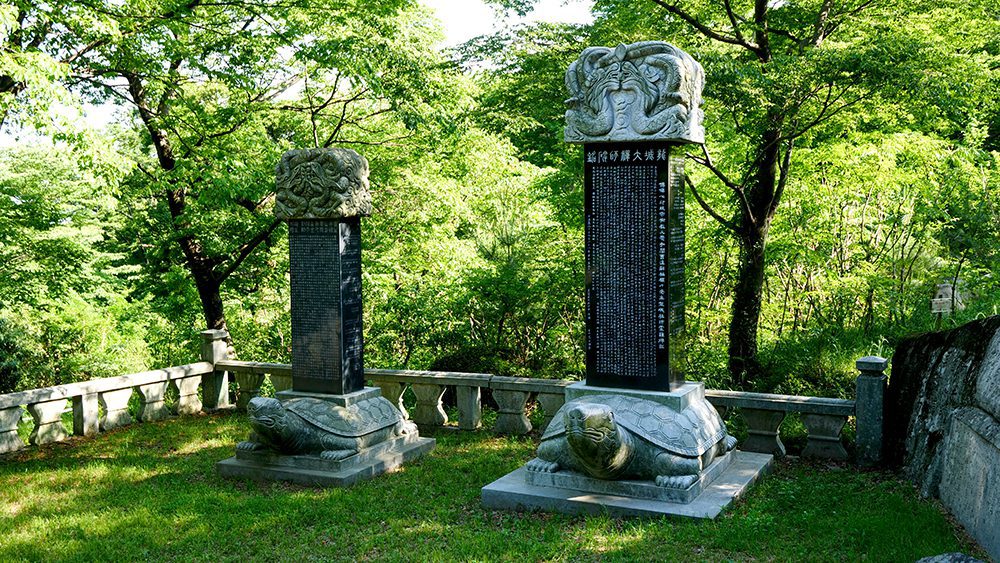
It’s worth noting that overnight Korean temple stays at Beomeosa Temple are only available on Saturdays. Every Saturday isn’t available, and available dates are only released two months beforehand. If you’d like your temple stay to be a cornerstone of your time in South Korea, you may want to book your temple stay before your flights.
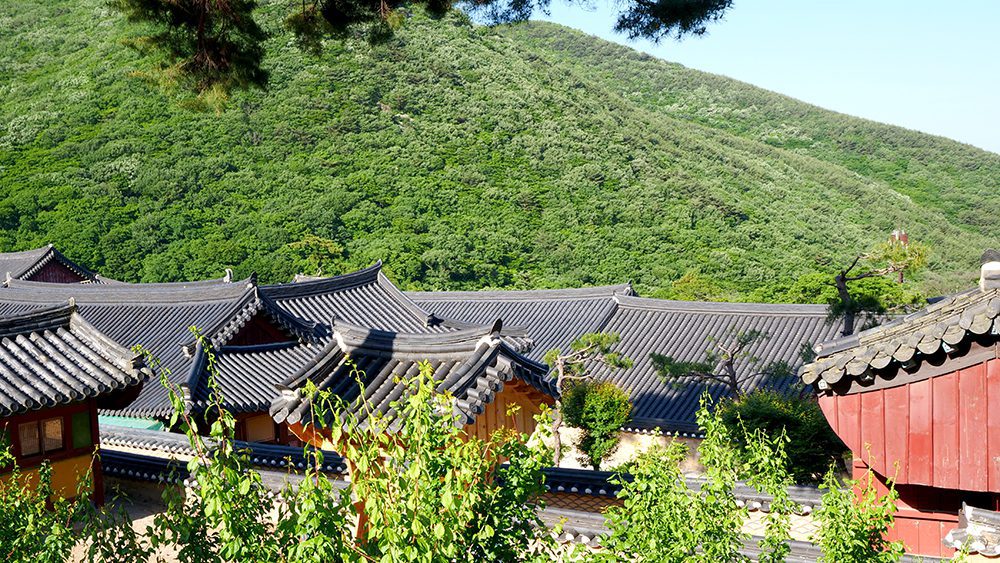
Unless you have a Korean bank account and can pay by wireless transfer, you’ll need to pay for your stay in cash once you arrive.
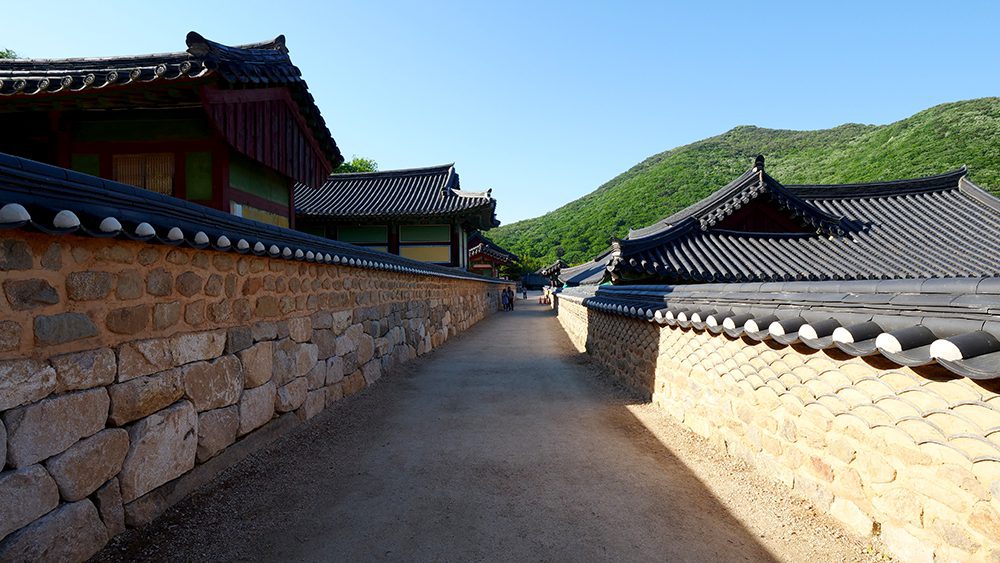
Full disclaimer: My Korean temple stay at Beomeosa Temple was a part of a group program arranged by KTO, the Korea Tourism Organization. Because of this, I didn’t have to book my own temple stay.

You should arrive at Beomeosa Temple around 2 p.m. for your temple stay. Upon arriving, you’ll pass through its wooden gates and walk up a path to the communal area. I suggest using a backpack to carry your possessions, as the path is long and includes some well-worn, outdoor stairs. You don’t want to have to lug around a heavy carry-on like I did!
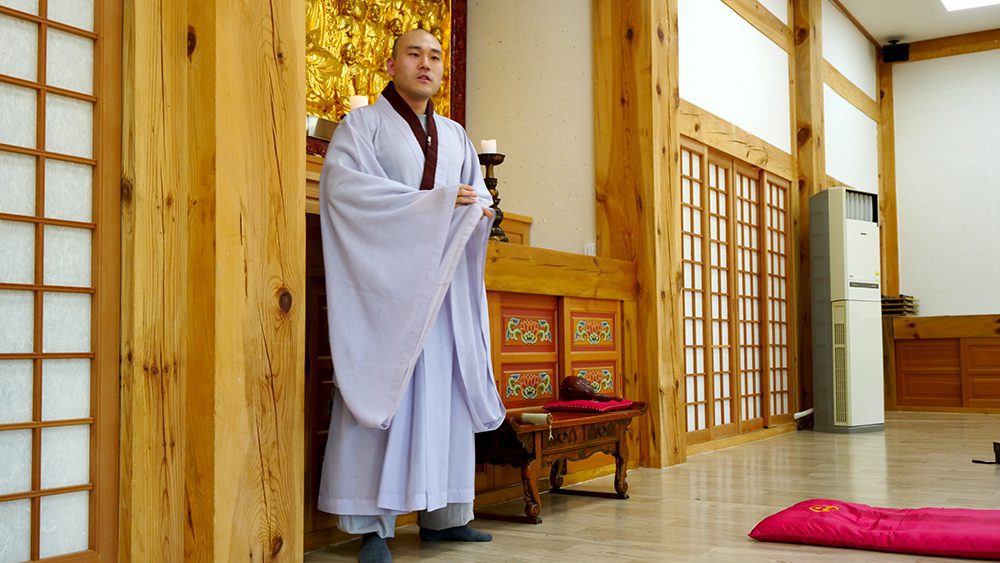
As is customary at Buddhist temples, you’ll need to remove your shoes before entering the complex’s buildings. There are men’s and women’s quarters at the temple, and you’ll share a sleeping space and a communal bathroom with your fellow travelers. You’ll be provided with a lavender-colored traditional outfit. It’s extremely soft and comfortable and feels like pajamas!
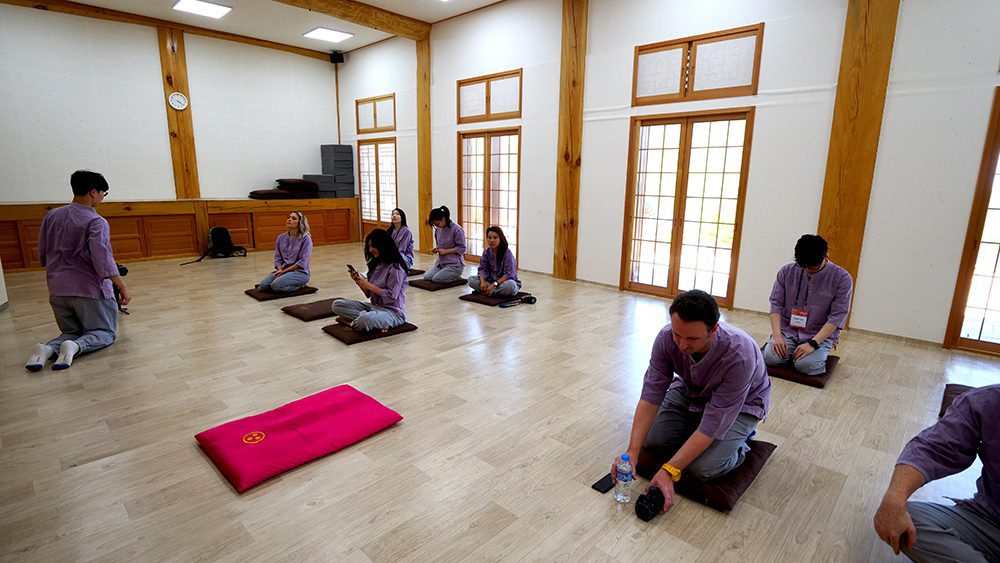
After you change into your uniform, the supporting monk will arrive and introduce himself, before launching you into the immersion of the program. You’ll learn how to properly perform three bows. There’s a technique to doing them, so pay attention so you do them properly!
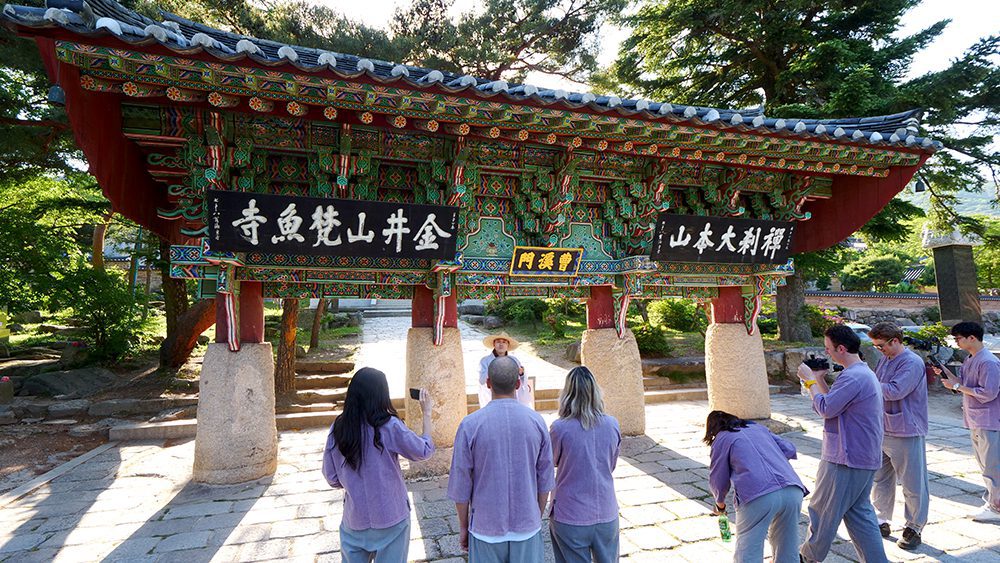
Before you head out to explore the grounds during your Korean Temple stay at Beomeosa Temple, the supporting monk will inform you of the temple rules. Here are some of the most important rules for visitors to remember:
Be sure to follow these rules and any other rules the monks share with you. This will help you and your fellow visitors have the best experience possible. The temple is the monks’ home and a sacred place. You don’t want to disrespect it.
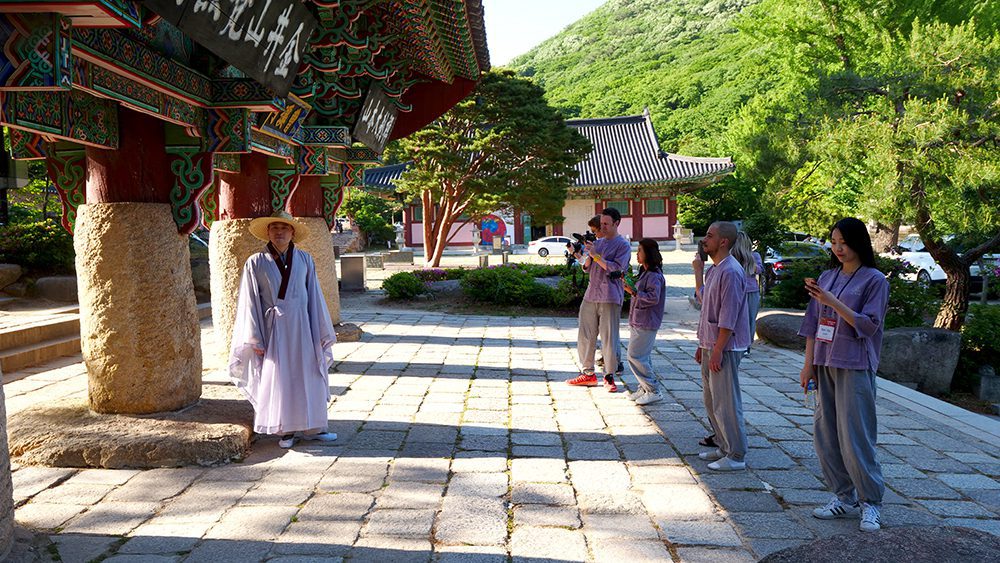
For your tour of Beomeosa Temple’s grounds, you’ll be allowed to put your shoes back on. There are three gates you’ll pass through to get to the main temple grounds area. The number of gates can vary from temple to temple, depending on their size, but most temples have three.

The gates are large, colorful, and ornate, with lots of intricate architecture that’s signature to the Far East. The first is called the One Pillar Gate because the gate only has one row of pillars. The second gate contains statues of four heavenly kings, who fight off evil spirits from the Buddha world. The third and final gate is equally colorful and impressive, and like the two before it, has its own symbolic meaning.
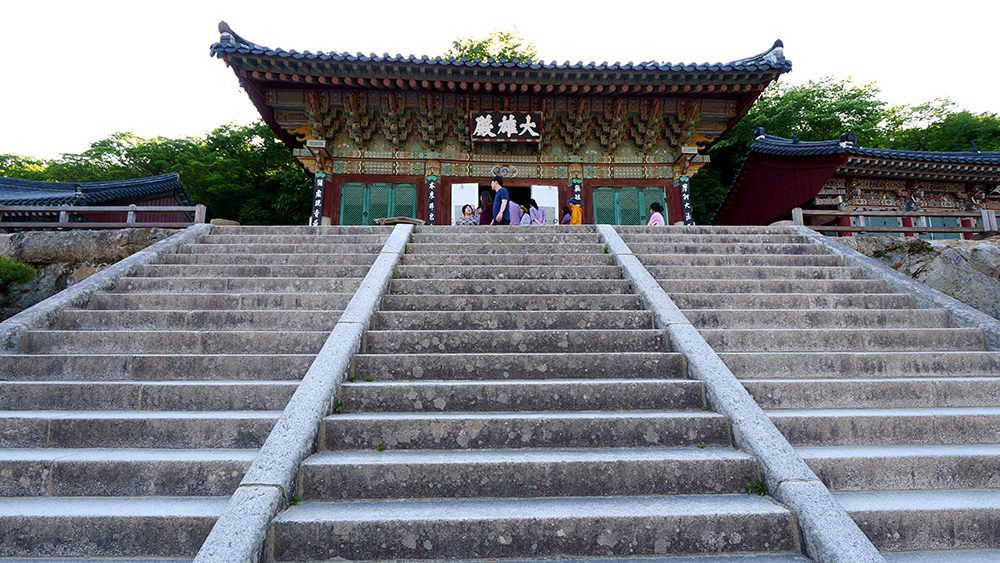
Once you enter the main temple, you’ll see the location where the monks play their instruments. They play four different instruments before the morning and evening ceremonies. They include a large drum, a wooden fish, a cloud-shaped gong, and a large bell.
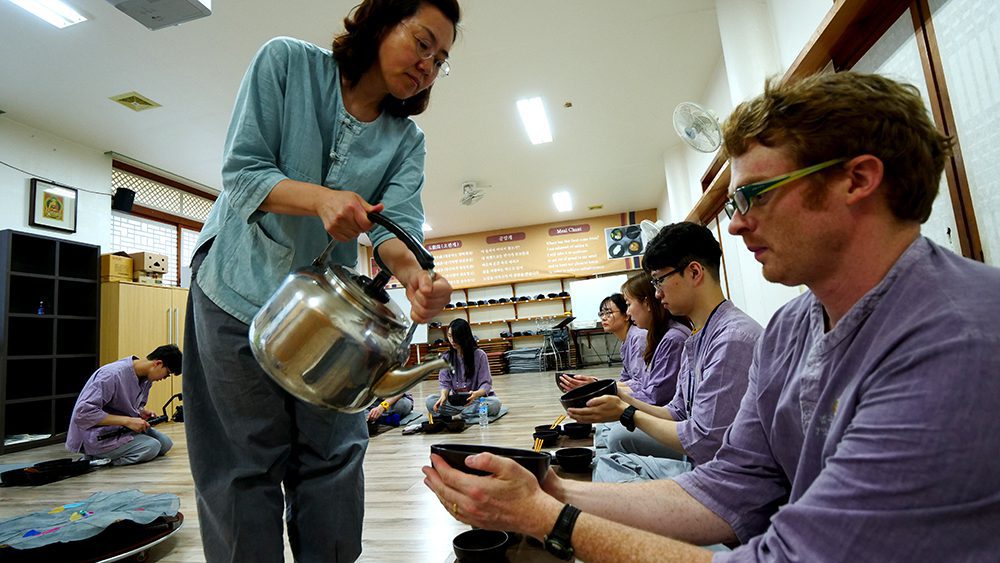
At 5:30 p.m., a bell will be rung, which signals dinner time. Buddhist monastic meals are vegetarian and are known as balwoogongyang or barugongyang. The meals are made with simple ingredients and are eaten in a traditional setting, on mats in a large hall.
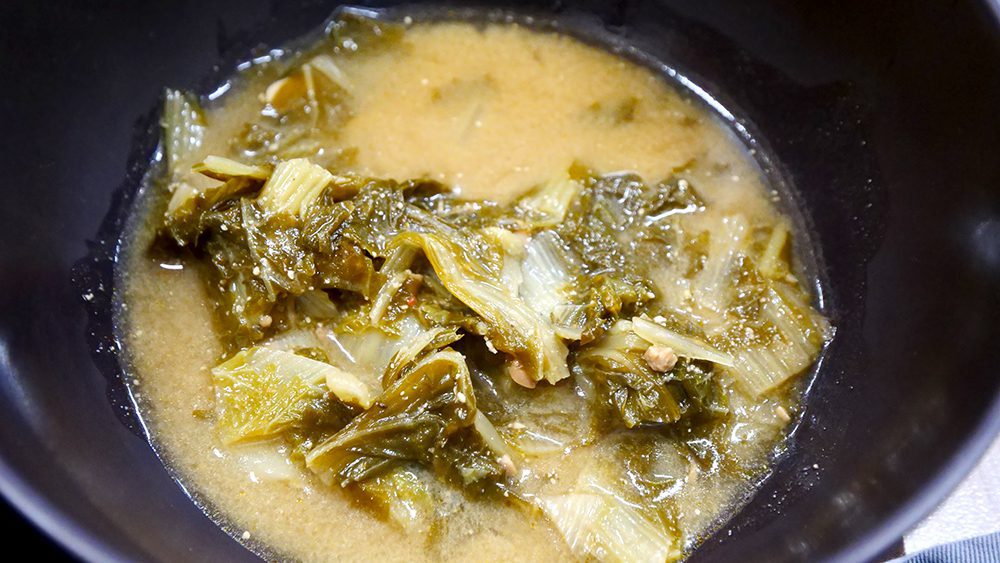
Before the meal, you’ll be informed of the dinnertime rules. Place the provided towel on your lap. You’ll be given four differently-sized bowls, all stacked inside one another and covered by a cloth. Arrange them the way the monk instructs you and place your spoon and chopsticks on the second bowl. The largest bowl is for your rice, while the second-largest is for your broth. The bowl with your utensils is for water, and the last bowl is for your side dishes.
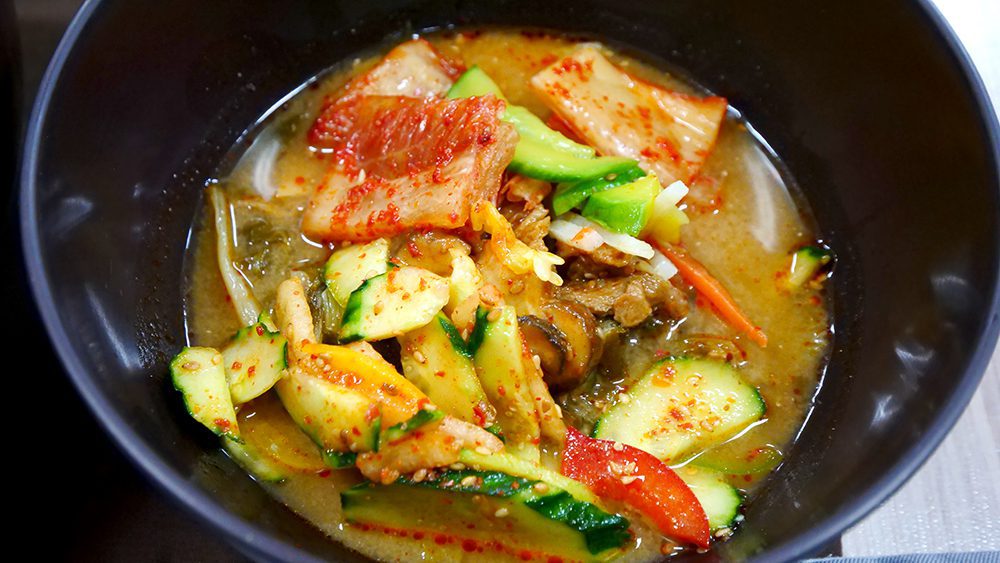
You’ll be served water first, followed by rice and a bowl of seaweed soup. Whatever you take, you have to eat, so don’t take too much. A variety of banchan, or side dishes, are also provided, including soybeans, cucumber, salads, yellow radish, and kimchi. You eat by holding the bowl close to your face. You’ll be instructed to leave one piece of yellow radish in your bowl after you finish.

Eating is meant to be a silent activity. Once you begin, you cannot talk or stop until you’re finished. Once you’re finished, you will use your final piece of radish to push around the last few morsels left in your bowl to clean it out. Not a speck of food is wasted. Then, you’ll use the water to rinse out each bowl, starting with the rice bowl, and dry them with your towel. Cover the bowls and put them back.
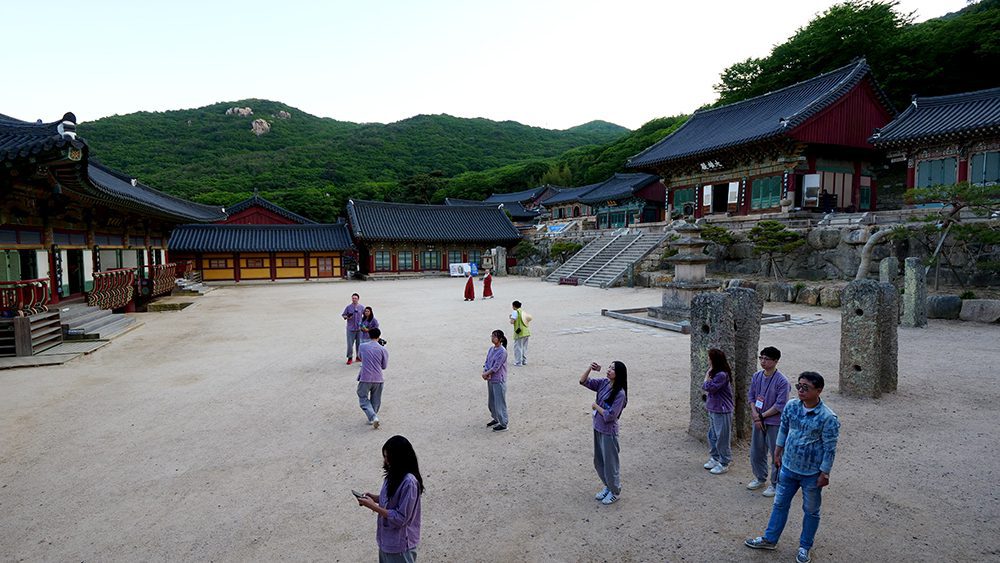
After dinner, you’ll head out to the drum tower to see the evening musical performance. It’s a large, leather drum that makes deep, resonant sounds when it’s pounded. The monk will pound the drum rhythmically for several minutes. It’s a wonderful and beautiful musical experience!
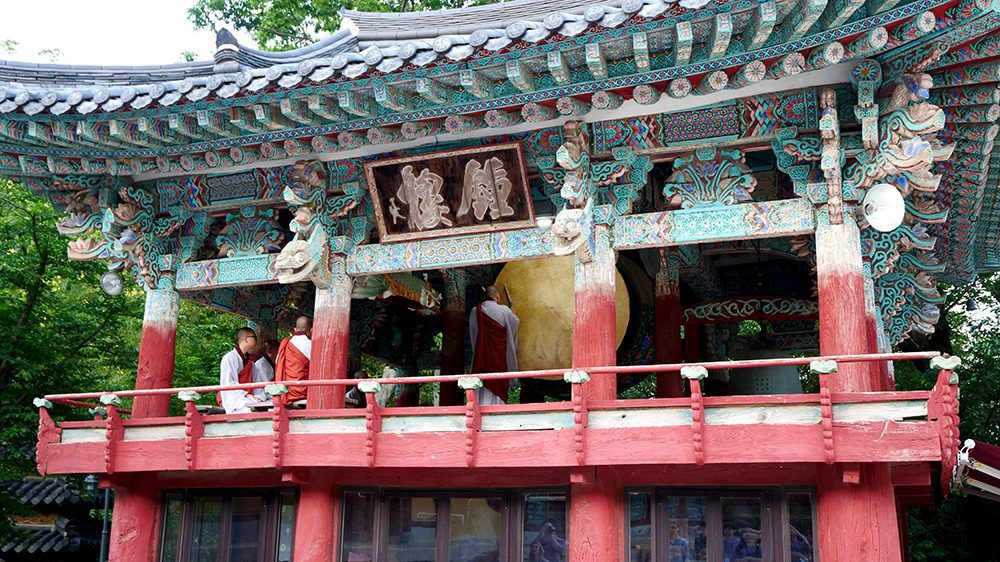
You will follow that with a 15-minute-long evening chanting ceremony called yebul. The ceremony involves chanting a song as well as lots of bowing and movement. This is one of the activities that cannot be filmed, so keep that in mind if you choose to vlog your Korean temple stay at Beomeosa Temple.
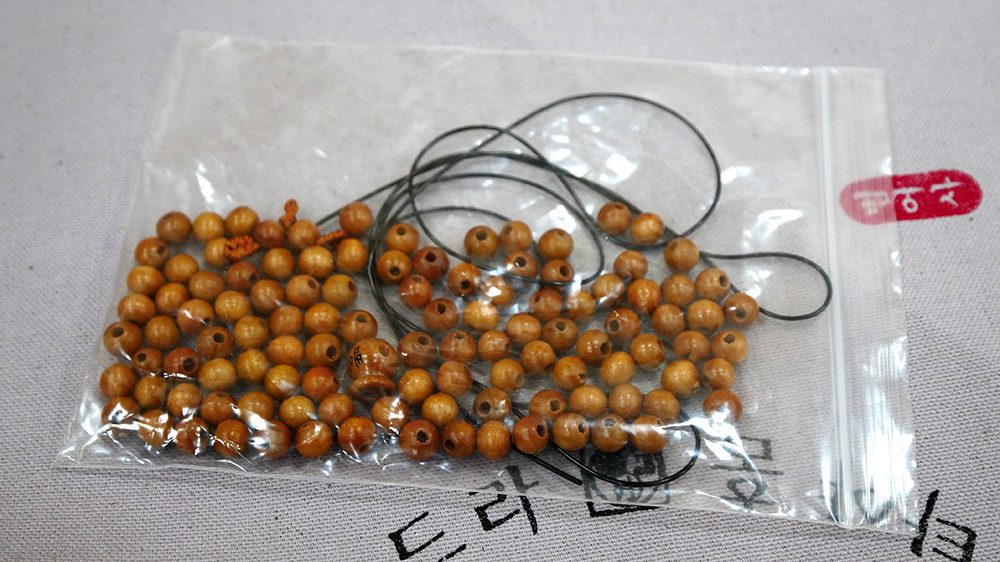
The final evening activity is prostrations, which involves completing 108 full bows in the communal hall. The bows seem like they’ll be easy at first, but become more difficult as time goes on. It’s a true workout and the last few were really tough for me! After that, you’ll make a bracelet using 108 wooden beads. Usually, you’d add a bead to the bracelet after each bow, but the process was simplified for us.
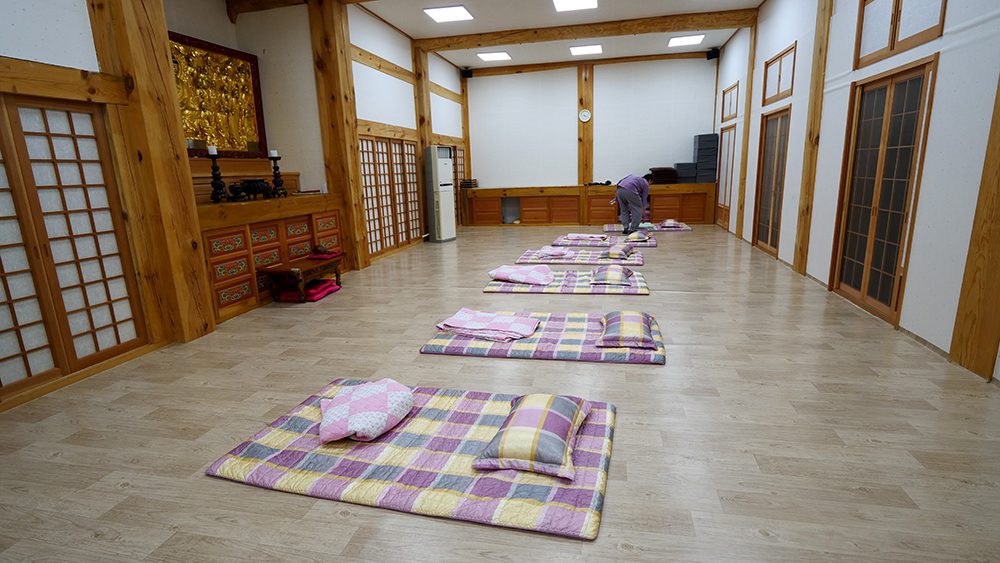
After you make your bracelet, it’s time for bed! The men and women sleep in separate rooms. You’ll be given a mat and a pillow to sleep on the floor. It’s like a big sleepover! Lights out is at 9:30 p.m. I suggest going to sleep, because wake-up time is at 5 a.m.

Drumming begins at 4:30 a.m. during your Korean temple stay at Beomeosa Temple. I woke up early due to a mosquito buzzing around my ear and stayed awake until the official wake-up time.

The first official morning activity is meditation, known as cham-seon. There are two types of meditation, but the one we participated in only focuses on your breathing.
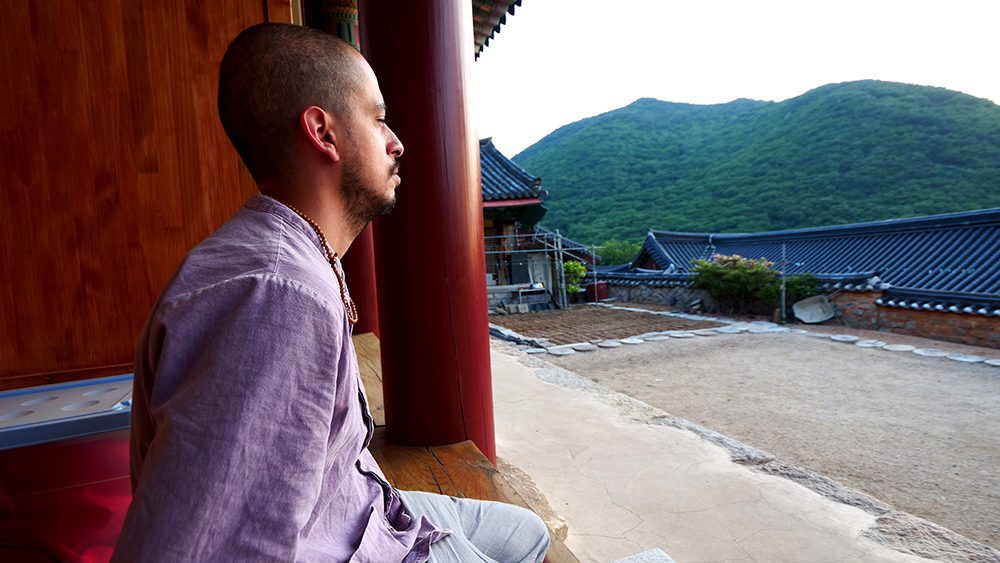
For this 30-minute activity, the monks will explain how the meditation works. You essentially count to five and then count backward while focusing only on the number and doing deep, rhymical breathing. If your mind wanders, which it likely will, you start over from one.
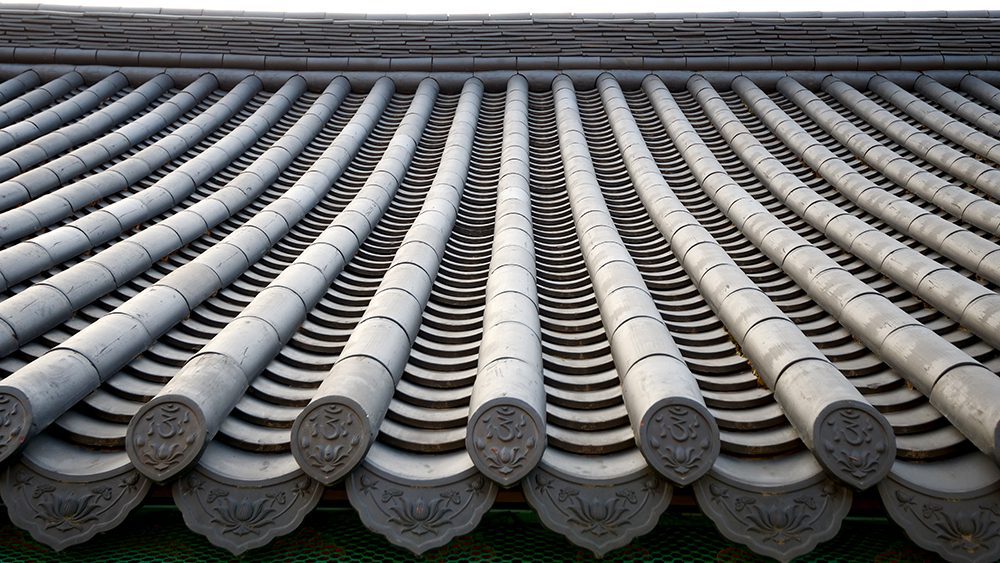
The activity took place outside at sunrise. We had a spectacular view of the surrounding area, including the mountainside. The lush, green hills surrounding the temple and the temple itself were bathed in the golden light of the rising sun, which made it very easy to feel at peace.
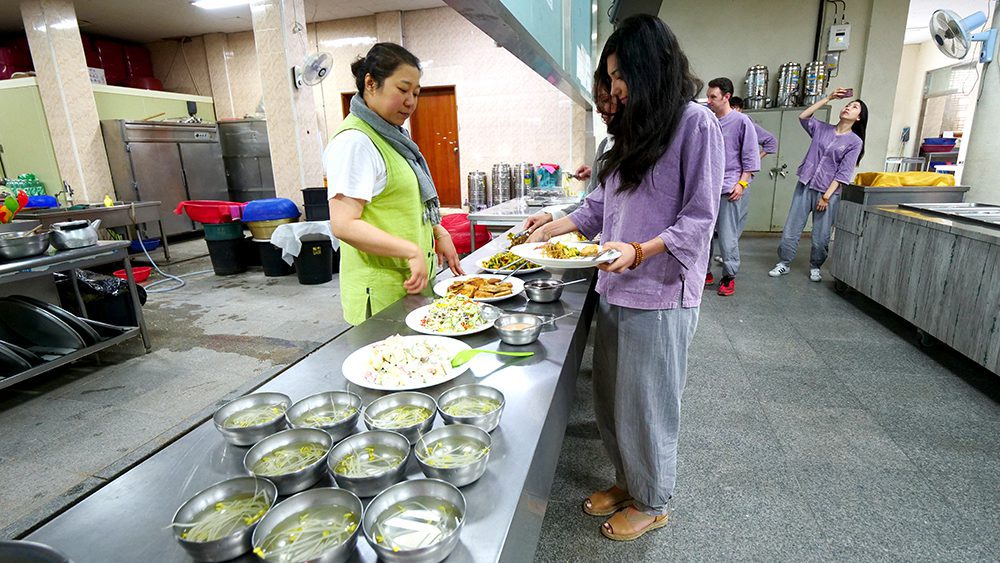
After the morning meditation, you will then be taken to the same dining hall as before. However, this time, you’ll eat in a cafeteria with tables instead of the traditional way. There is a buffet-style breakfast, which consists of simple, vegetable-based monastic dishes like rice, spicy kimchi, broccoli, sprouts, and a crunchy root vegetable with sesame seeds.
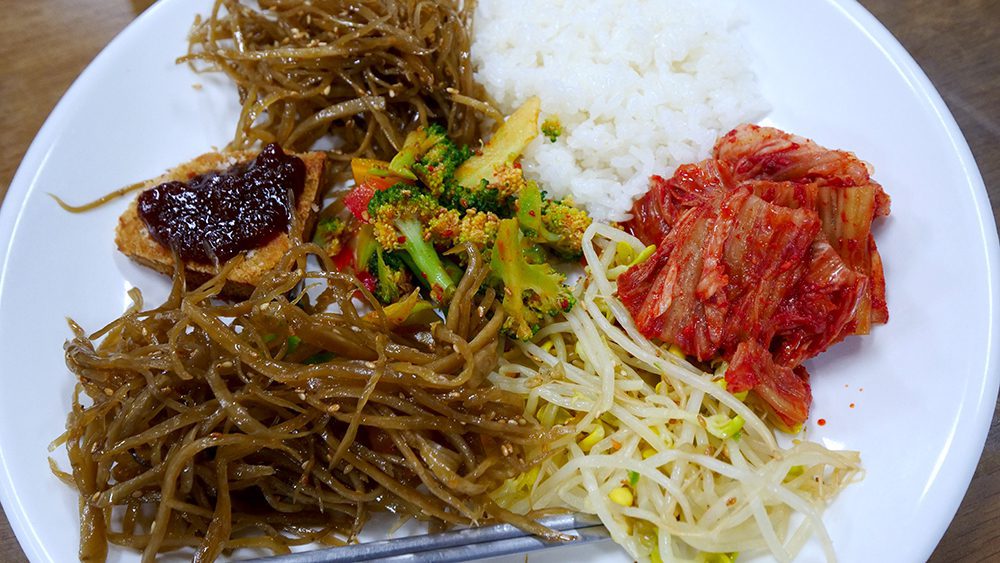
After breakfast, you must wash your own dishes. Take your dishes to the sinks, add some soap, and scrub your plate and chopsticks until they are clean. This is very important, as no one will do it for you! Once you’re finished, let your plate dry and put it back on the counter.

From there, you’ll hike up a beautiful, green path to one of the smaller temples surrounding the main temple. The temple my group and I visited is famous because it was the headquarters of a specific style of martial arts that was established there. There is a large statue of the Buddha, as well as several statues of other figures from Korean Buddhist mythology.
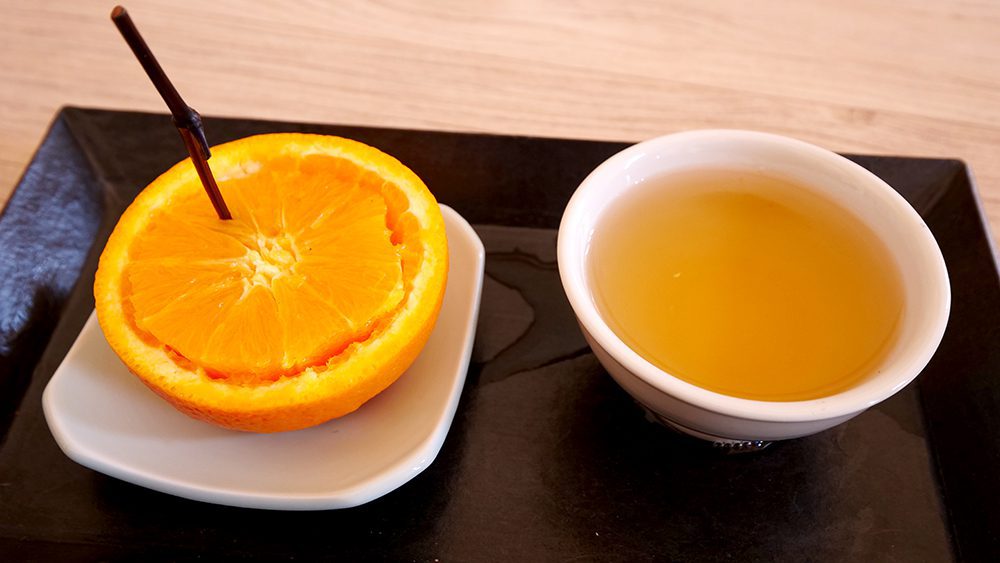
The final activity you’ll enjoy is the da-seon, or tea ceremony. You’ll be served some tea with an orange and will have time to speak with the monk. He’ll tell you more about daily life at the temple and what it entails. You’re free to ask questions but try not to ask any personal questions. After that, your overnight temple stay is officially over!
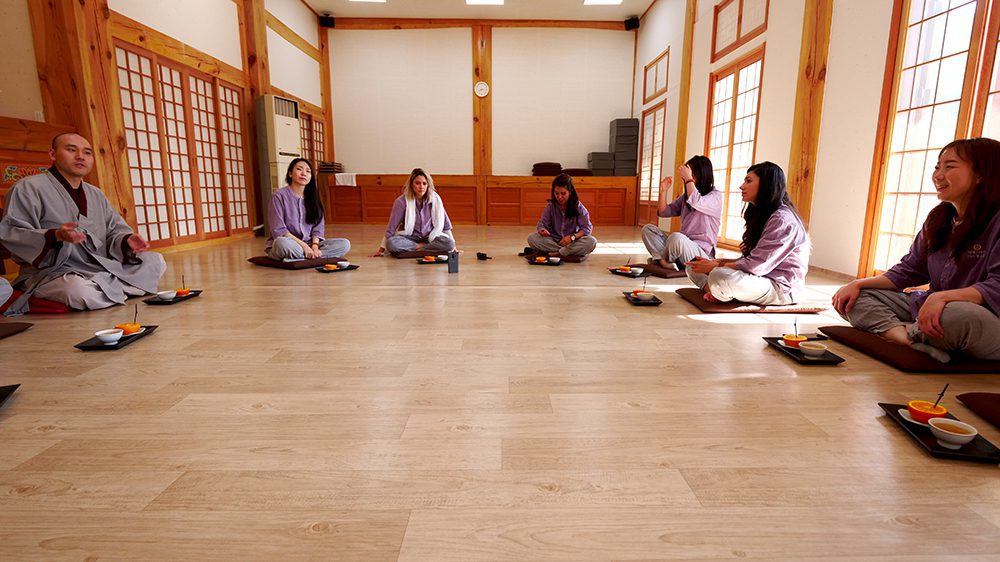
My Korean temple stay at Beomeosa Temple was a mind-blowing experience. It was my first time staying at a temple overnight. It was such a unique opportunity that allowed me to dive deep into Korean Buddhist practices and try delicious, authentic monastic food. If you want to truly explore Korean Buddhism, this is the way to do it. It’s an enlightening and eye-opening experience that everyone should have when they visit the country. Book a Korean temple stay at Beomeosa Temple today!
To check out the video of my amazing Beomeosa temple stay, click here!
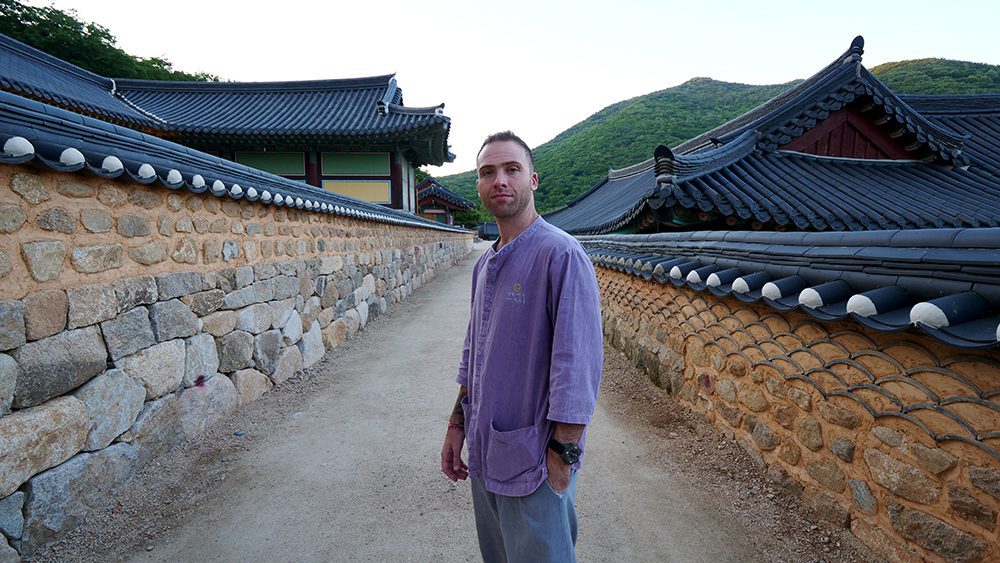
If you need to check the visa requirements of a particular country, click here. To apply for a visa, find up-to-date visa information for different countries, and calculate the cost of a particular visa, click here!
Counter
101 Countries • 1432 Cities
rishiindiatravels says:
Thank you for writing such a great post. The way you express things in content is just mind-blowing. I am looking forward to reading more of your content. I hope you have a beautiful day.
David says:
thank you!!!